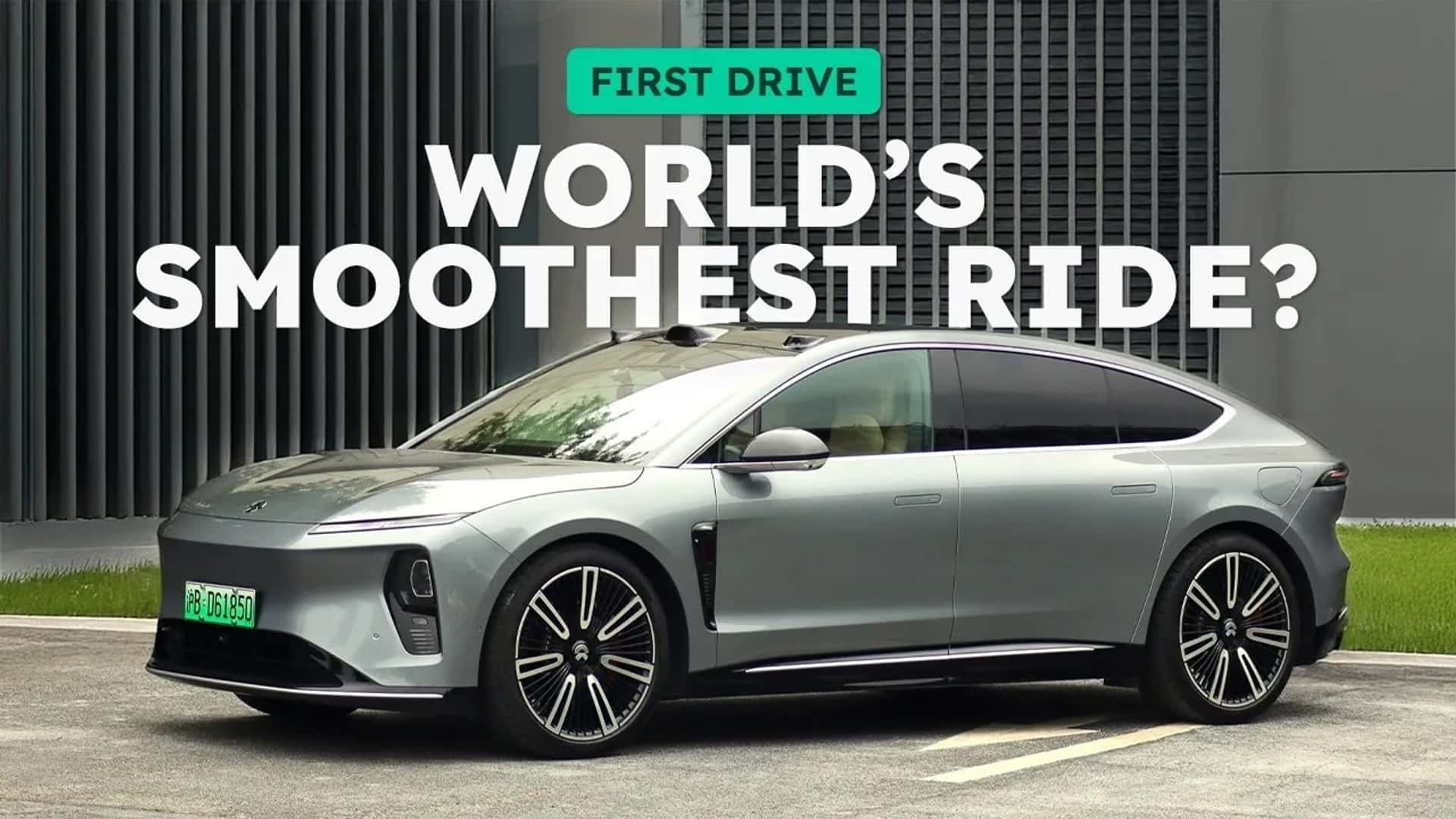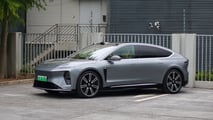
I've had the privilege of testing a lot of advanced electric vehicles in China, but some of them get the short end of the stick from me.
China car coverage can be overwhelming. There are just so many moving parts and new ideas that it is very hard for one person to give airtime to them all. Even when I went with Editor-in-Chief Patrick George, the two of us had a hell of a time writing about all of the stuff we experienced at the car-packed Shanghai Auto Show. And when I get back stateside, life, and other assignments, tend to get in the way.
One of the biggest examples of “Jesus, please take this burden off my shoulders” would be the Nio ET7. While in China last November to try the BMW X3-fighting Nio ES6 and the Corolla-priced-but-Tesla-beating Onvo L60, I also got seat time with the ET7, a kind of Mercedes E-Class rival. And I never wrote about it. (Sorry.)
It’s not that the car was bad; au contraire, it’s nice. But I was overwhelmed with other, arguably more important cars. The ES6 and L60 are two compact to medium-sized crossovers with swappable batteries that collectively aim to dethrone the Tesla Model Y globally. Meanwhile, the medium-sized luxury sedan segment is becoming kind of irrelevant. Just look at Tesla Model S sales these days.

But then Nio came out with the ET9, a luxury flagship sedan that slots above the ET7 and aims at the likes of the S-Class. Now we're talking. Like the S-Class, it's a technological powerhouse, packed with features that promise to revolutionize the future of luxury electric transportation. There's nothing "meanwhile" about this thing; it's as impressive a car as you'll find on any continent.
It’s so cool that it even caught the attention of Joe Rogan.
What Is The Nio ET9?
Nio is especially known in the West as the Chinese automaker that does the battery-swapping, but the cars themselves are equally impressive—especially as the lineup has matured over time. And the ET9 is its most advanced model yet.

It has a 100-kilowatt-hour battery operating a mind-blowing 925-volt architecture, and DC fast-charging is rated for up to 600 kW. Those combined specs outclass anything you can buy in America; only a Lucid Gravity comes close. The battery is said to add 158 miles of range in five minutes, or it can be swapped out in three minutes with a fully charged pack at Nio's Power Swap Stations. On China's CLTC testing cycle, it can do over 400 miles of range, and its dual electric motors put down nearly 700 horsepower.

While I find the Citroen-esque super long fastback lines to be good-looking, there's still more to this car than meets the eye. It represents a lot of firsts for Nio—some more banal than others. Like, it's the first car Nio has ever made that has a frunk.
Of course, I wouldn’t waste your time with a roughly 1,200-word story that only talks about a long Chinese car with a frunk.
This car has two secret tricks up its sleeve. The first big thing is that it puts into production a technology that's only been theorized about until now: Bose’s magnetic predictive suspension. You may have seen the viral video some years ago with the jumping Lexus LS460. The ET9 actually has it, which is why you probably saw even more viral videos out of China where the car "dances" to music:
The ET9 is also China’s first full steer-by-wire vehicle approved for series production. Pair those two ideas together, and you may have what could be China’s most interesting car on sale today.
So How Does It Work?
The ET9’s suspension is done up by a Boston-based company called ClearMotion, building on the concept shown off by Bose back in the 1990s. At the time, Bose and most any other automaker said that the system would be too complicated and heavy to implement on any production car, but ClearMotion saw it through. Nio is the first car manufacturer to use the tech on a production vehicle. For Nio, the suspension tech is called SkyRide.
This car’s suspension is electrohydraulic; there's a pump and reservoir of fluid on each corner of the car that can adjust the car’s wheels up and down 60 times faster than any spring. Each pump can respond to 1,000 torque adjustments per second, while its air suspension holds onto the actual damping part of the suspension.
This is all paired against HD-maps of Chinese roads, which do have some form of knowledge of bumps and imperfections. This data is fed to the car, which can effectively predict when a car hits a bump. Even when the data isn’t present, the hyper-fast response time of the car’s electrohydraulic system can essentially stop bumps right as they happen.
The effect in person is startling. Only the most minute of road imperfections, ones that are too small for the suspension to isolate, are transmitted to the cabin.
How Does The Nio ET9 Drive?

In a word, it’s amazing. Our drive was mostly on freeway roads outside of Shanghai, and the car’s suspension is crazy in how it nearly completely isolates any sort of road imperfection. The system prioritizes keeping the body level, which can feel surreal. Fly over an overpass expansion joint at freeway speed, and the car feels almost unnaturally level as it vacuum-sucks itself to the road. Throw it into a curve, and you’re rewarded with crazy grip for such a big car.
Add in the lightning-quick steer-by-wire, and ranks up there with the Zeekr Mix for a driving experience that doesn’t feel like you’re even driving. It feels like a futuristic transport pod, rather than a car. That’s a good thing, I think.



Nio had me sit in the front seat and watch a movie on the car’s infotainment screen. Within a few moments, the car had turned into a homebrew 4DX movie theatre bobbing up and down, matching the movements of the main character on screen. Similarly, with a car racing video game, the ET9’s suspension banked left and right as I steered the main car around the course.
Was it a gimmick? Maybe. Was it cool? Absolutely, and it’s the kind of cool thing that I think every manufacturer building super-pricey EVs should consider offering a feature like this.
Nio ET9: What Does It Mean For The Rest Of Us?
As I mentioned, the ET9 is already getting attention elsewhere. Even Joe Rogan is hyped up about that air suspension. "Pretty dope," he says.
But like the Firefly, or Zeekr 007 Estate, or Onvo L60, there’s very little chance that the Nio ET9 will ever make it to the United States. However, the ET9’s suspension is made by an American company, and the ET9 is attracting global attention for how well resolved and how good it is to use. The ET9 might not be in your driveway, but a manufacturer that you can buy in the U.S. could end up using the technology.
What a reversal that would be. The Chinese car industry, once known for clones and low-quality cars, now has big legacy brands looking to it for high-tech luxury car solutions.
Gallery: Nio ET9 First Drive







Contact the author: Kevin.Williams@insideevs.com







